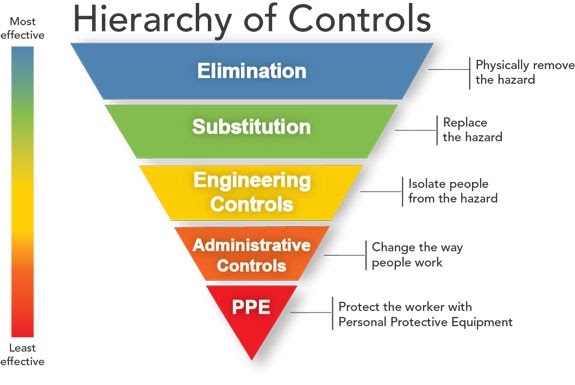Engineering Controls and Personal Protective Equipment (PPE) for the Laboratory
Engineering Controls
Research laboratories are filled with a variety of experiments. Knowledge of this equipment, maintenance, and regular inspection of equipment are all important parts of running a laboratory. Engineering controls are strategies designed to protect workers from hazardous conditions by placing a barrier between the worker and the hazard or by removing a hazardous substance through air ventilation. The hierarchy of controls are listed from most effective to least effective.

Fume Hoods
One of the primary safety devices in a laboratory is a chemical fume hood. A well-designed hood, when properly installed and maintained, can offer a substantial degree of protection to the user, provided that it is used appropriately and its limitations are understood. The determination that a fume hood is necessary for a particular experiment should be based on a hazard analysis of the planned work. Such an analysis should include: A review of the physical characteristics, quantity and toxicity of the materials to be used; the experimental procedure; the volatility of the materials present during the experiment; the probability of their release; the number and sophistication of manipulations; the skill and expertise of the individual performing the work.
- How a Fume Hood Works
- Fume Hood Performance Indicators
- Fume Hood Proper Work Practices
- Fume Hood Common Misuses & Limitations
PPE
PPE is gear or clothing used to protect the wearer from specific hazards and hazardous materials. It is the final protection system to be used when administrative and engineering controls do not reduce risk to an acceptable level. PPE does not reduce or eliminate the hazard but only protects the wearer.

